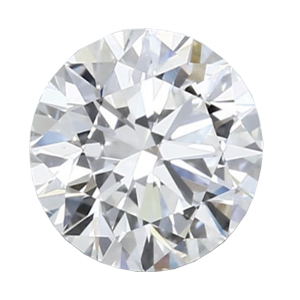What Determines the Cost of a Diamond?
Posted on Wednesday, May 19th, 2021
in Diamond.
Chances are you’ve heard of the 4 C’s. The founder of the Gemological Institute of America (GIA) came up with the famous mnemonic device in the early 1940s to help students remember the four characteristics of a diamond: color, cut, clarity, and carat weight.
However, a lot has changed since then, and while these four characteristics are still used to describe diamonds today, there are additional factors that need to be taken into consideration when determining the value and cost of a diamond. In addition to the 4 C’s, a diamond’s shape, means of creation, transparency, and treatment all affect the value of a diamond. Here’s a general overview of each of these eight diamond characteristics.
- Color: Non-fancy-colored diamonds are evaluated based on the absence of color. Rated on a scale of D (colorless) to Z (light yellow or brown color), the diamonds that are most valuable are the ones with very little to no color (D, E, and F).
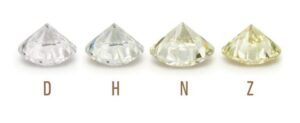
- Cut: The cut of a diamond refers to how well the diamond’s facets interact with light. The diamond cut scale contains five grades ranging from Excellent to Poor. Excellent cut diamonds display desirable visual effects, like brightness, fire and scintillation, and are the most valuable.
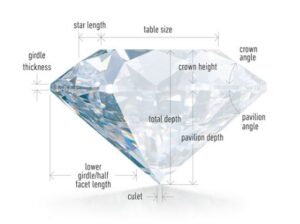
- Clarity: Small crystals can become trapped inside a diamond while it’s forming. These are called inclusions. The number, size, relief, nature, and position of these inclusions (along with any external blemishes) determine the clarity grade of a diamond. Diamonds with very few or no inclusions are the most valuable. A diamond’s clarity can be described as:
- Flawless (FL): No inclusions and no blemishes visible under 10x magnification
- Internally Flawless (IF): No inclusions visible under 10x magnification
- Very, Very Slightly Included (VVS1 and VVS2): Inclusions so slight they are difficult for a skilled grader to see under 10x magnification
- Very Slightly Included (VS1 and VS2): Inclusions are observed with effort under 10x magnification, but can be characterized as minor
- Slightly Included (SI1 and SI2): Inclusions are noticeable under 10x magnification
- Included (I1, I2, and I3): Inclusions are obvious under 10x magnification which may affect transparency and brilliance

- Carat Weight: The weight of a diamond is measured in carats. One carat is equivalent to 0.2 grams (or 200 milligrams). All else being equal, the larger the carat weight, the more valuable the diamond.
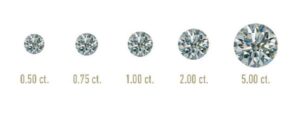
- Diamond Shape: Diamonds can be cut into a variety of different shapes. Some of the most common diamond shapes include round, oval, square, pear, and marquise. Round diamonds are typically the most expensive shape due to their higher demand, larger amount of material lost during the cutting process, and incomparable brilliance.
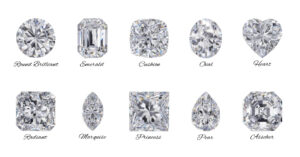
- Means of Creation: Diamonds can be created either naturally or in a laboratory. Those created naturally formed somewhere between 1-3 billion years ago at depths between 90 to 120 miles below the Earth’s surface and were eventually carried closer to the surface by volcanic pipes known as kimberlite pipes. Because there is a finite amount of natural diamonds in the world, their value typically remains stable and usually increases slightly year after year. Lab-grown diamonds, on the other hand, are relatively new to the fine jewelry industry and given they can be created at any time, their value is somewhat unstable. Currently, lab-grown diamonds cost about 30% less than natural diamonds but that may change in the future.
- Transparency: Transparency refers to the degree to which a diamond transmits light. Transparent diamonds appear clear and distinct and are more valuable than translucent or opaque diamonds that appear milky or cloudy.
- Treatment: Sometimes diamonds will undergo treatments to improve their clarity, color, and transparency. These treatments include fracture filling, laser drilling, coating, irradiation, heating, and high pressure high temperature. A diamond with any type of treatment is considered less valuable than an untreated diamond with the same clarity or color.
Diamond grading certificates can help you determine the quality of a particular diamond. But you shouldn’t purchase a diamond based on the grading report alone. Two diamond graders could assign different grades to the same diamond based on their opinion and level of expertise. The diamond report also won’t tell you how beautiful (or unattractive) a diamond really is. That’s why it’s so important to work with a diamond buying expert when purchasing a diamond so that you can ensure you’re getting the best value possible.
Have additional questions about the different diamond characteristics? Visit us in-store, email us at info@kloiberjewelers.com, or call us at 414-276-2457 and we’d be happy to answer your questions.


